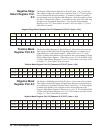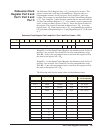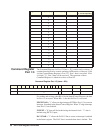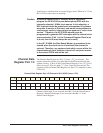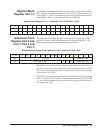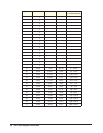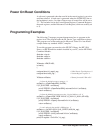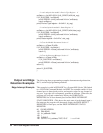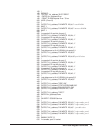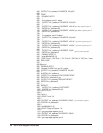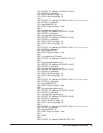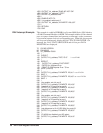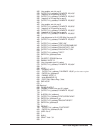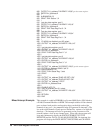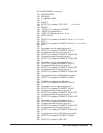
92 HP E1459A Register Definitions
/* read and print the module’s Device Type Register */
errStatus = viIn16(E1459,VI_A16_SPACE,0x02,&dt_reg);
if (VI_SUCCESS > errStatus){
printf(“ERROR: viIn16() returned 0x%x\n”,errStatus);
return errStatus;}
printf(“Device Type register = 0x%4X\n”, dt_reg);
/* read and print the module’s Status Register */
errStatus = viIn16(E1459,VI_A16_SPACE,0x04,&stat_reg);
if (VI_SUCCESS > errStatus){
printf(“ERROR: viIn16() returned 0x%x\n”,errStatus);
return errStatus;}
printf(“Status register = 0x%4X\n”, stat_reg);
/* Close the Module Instrument Session */
errStatus = viClose (E1459);
if (VI_SUCCESS > errStatus) {
printf(“ERROR: viClose() returned 0x%x\n”,errStatus);
return 0;}
/* Close the Resource Manager Session */
errStatus = viClose (viRM);
if (VI_SUCCESS > errStatus) {
printf(“ERROR: viClose() returned 0x%x\n”,errStatus);
return 0;}
return VI_SUCCESS;
}
Output and Edge
Detection Examples
The following three programming examples demonstrate edge detection,
DAV, and mixed programming methods.
Edge Interrupt Example This example is coded in HP BASIC for a System 9000 (Series 300) linked
to a HP E1406 Command Module via HPIB. The example enables all four
channel ports to detect both positive and negative edges on any channel of
any port. Any edge will consequently generate an interrupt. When idle, the
program will loop and continuously display the WORD DATA
REGISTERS for all four channel ports and the EDGE INTERRUPT
STATUS REGISTER. (This shows the static state of each channel input.)
On interrupt, the program will alternately display the EDGE DETECT
REGISTERS of each port, and the EDGE INTERRUPT STATUS
REGISTER.
90 CLEAR SCREEN
100 DIM A$[40]
110 Vxi_address=70900
120 !
130 CLEAR 7
140 OUTPUT Vxi_address;"*RST;*CLS"
! reset E1406



